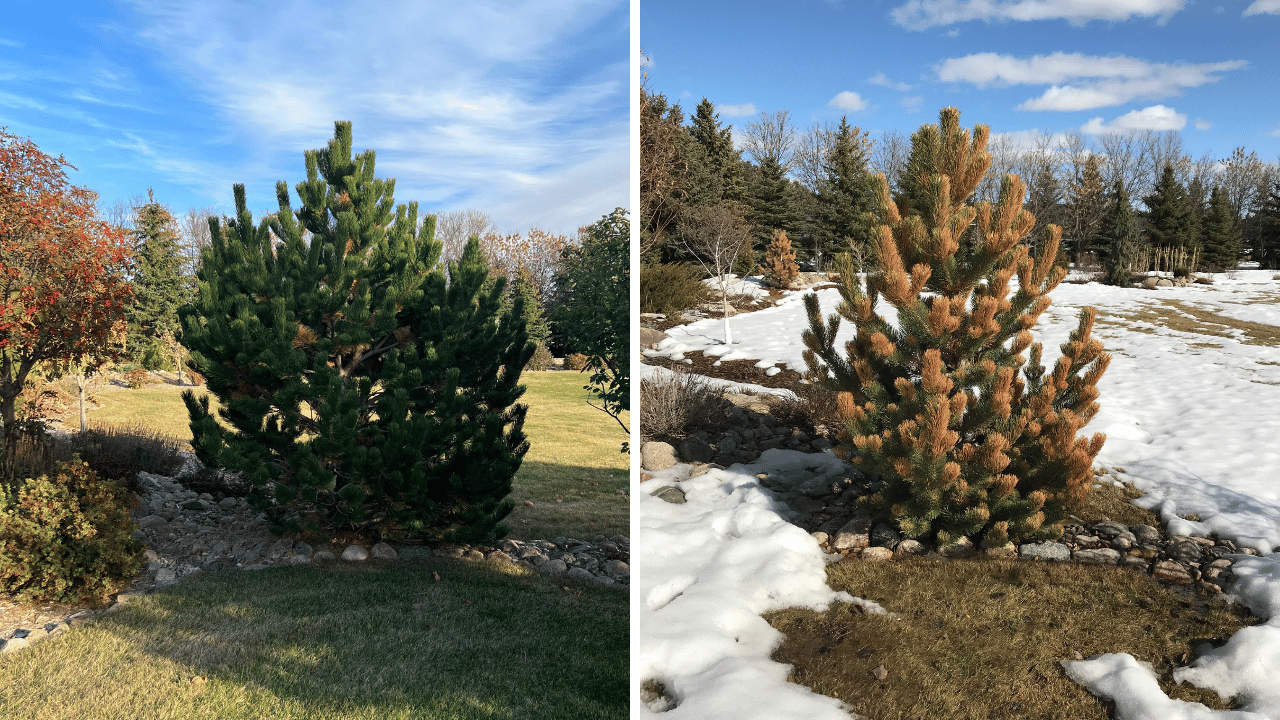Winter Evergreen Burning: Anything I Can Do?

Burning symptoms on evergreen conifers usually show up in late winter and early spring. Just because a plant burns occasionally does not mean it is not hardy, at least not in my book. I consider it susceptible to burning.
Why do evergreens burn?
- Sustained winds; eventually, the moisture in the evergreen needles/leaves exhausts itself.
- Temperatures can warm up in the spring before the frost layer in the ground has thawed. The plant will start breaking dormancy, but the root system is not ready to do its part; it's still dormant, and needle burn results.
- The sun reflecting off snow can act like a mirror and cause significant needle burn.
What can you do to avoid burning?
- Plant cold hardy, burn-resistant varieties for your area.
- Check with your area universities, agriculture extension offices, garden centers, and landscapers for the best plant varieties.
- Keep your evergreens well-watered and fertilized. Stressed plants are more susceptible to burning, especially in a harsh, prolonged winter.
- Wrap your evergreen with burlap before winter to protect the needles.
We never know what type of winter we will get each year. Winter evergreen burn on needles is always a concern. In this video, the tour looks at various burn examples we've experienced over the last several years and discusses available options.
I'm not a big fan of the big box stores or mass merchants when shopping for evergreens. My experience is they have "buyers" purchasing for large regions, and they have a one-size-fits-all mentality. At the mass merchants, suitable varieties can be found, but do your research carefully.
Other options:
Where practical (usually with smaller plants), wrap your evergreen with burlap; this will help protect it from wind and the sun reflection problems mentioned above. It's not foolproof, but years ago, I carried out this process each fall on some upright Yews for a customer, and we had excellent results.
Anti-transpirant sprays are an option, but the timing of their application in the fall is essential. I'm not a big fan of this option; my list of chores in the fall is long enough, and I prefer to avoid spraying chemicals of any type in my landscape. Wilt Stop and Wilt Pruf are two common brands available should you decide to give anti-transpirants a try.
What about horticulture oils?
These are lightweight, highly refined oils, more commonly now called dormant oils, and are usually more recommended for insect control. The oil causes a smothering effect on the insects.
I grow a small collection of evergreens in containers yearly, then overwinter them artificially to protect the roots from frigid temperatures. Growing susceptible evergreens like this is an excellent option for those unique evergreens that would otherwise burn up. Check out this video here if you want to grow and overwinter evergreens in containers.
Here are the top evergreens hardy to Zone 3 that I recommend for the northern Great Plains.
- Tannenbaum Mugo Pine
- Colorado Spruce
- Black Hills Spruce
- Ponderosa Pine
- Norway Spruce
- Medora Juniper
- Prairie Statesman Swiss Stone Pine
- Techny Arborvitae
- Degroot's Spire Arborvitae
- Hetz Midget Arborvitae
Thanks for stopping by Garden Hike!
Kevin
Garden Hike is supported by its audience. When you purchase through links on this site, we may earn a small commission at no additional charge to you. Thank you.
Click A.M.Leonard’s banner below to check out their great selection of tools and supplies.

